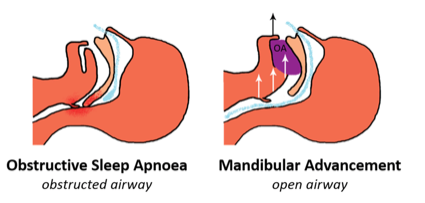Sleep apnea is a chronic disease affecting over 50 thousand Bahamians.
In this column, we will discuss Obstructive Sleep Apnea- its symptoms, risk factors and dental application.
Obstructive Sleep Apnea is a dangerous condition that is often undiagnosed. If you wake up tired, sweaty or with headaches or find yourself snoring, choking in your sleep or getting up to urinate at night, you may be suffering from obstructive sleep apnea.
This serious sleep disorder causes your breathing to stop and start while you sleep. Your throat closes in on itself, obstructing regular breathing, forcing your body to subconsciously wake itself to open your airways again. In many patients, this happens hundreds of times per night, which can disturb the quality of their sleep.
If left untreated, sleep apnea can lead to other chronic disorders that can seriously harm a person’s quality of life, like early onset Alzheimer’s and even sudden death.
Symptoms of sleep apnea include:
- Loud or frequent snoring
- Pauses in breathing
- Choking or gasping sounds
- Daytime sleepiness or fatigue
- Insomnia (hard to fall asleep)
- Morning headaches
- Going to the bathroom frequently at night
- Difficulty concentrating
- Memory loss
- Decreased sexual desire
- Irritability
If sleep apnea is untreated it can lead to the following:
- High blood pressure
- Heart disease
- Heart rhythm abnormalities
- Stroke
- Early onset Alzheimer’s disease
- Pre-diabetes and diabetes
- Depression
- Sudden death
Many risk factors can be identified in the dental practice.
When taking patient health histories and conducting oral clinical examinations, dentists can screen patients for common risk factors such as: a large tongue or tonsils; mandibular retrognathia (when the lower jaw that is behind where it should be) or micrognathia (when the lower jaw is smaller than it should be). Other risk factors include a large neck, choking or gasping during sleep, obesity, loud or irregular snoring, or breathing pauses during sleep (if reported by bed partner). Persons presenting with these features may be referred to a primary care physician or sleep medicine specialist for further evaluation.
Diagnosis of Obstructive Sleep Apnea includes a conventional overnight sleep test with a special recording device. This is the gold standard for comprehensive sleep evaluation and sleep apnea diagnosis. Also, video recording is included during the overnight sleep study, plus sound recording to assess breathing and snoring levels. Home sleep apnea tests are also available.
Various treatment options are available for patients to consider. The most common choices include the use of Positive Airway Pressure (PAP) therapy and Oral Appliance Therapy. The oral appliance is a commonly recommended treatment for patients with mild to moderate sleep apnea, or people with severe apnea who cannot tolerate the use of the PAP machine.
Oral Appliances are fabricated for individuals with sleep apnea. Oral appliances are custom-fitted by a dentist for placement in the mouth during sleep to prevent tissue and the base of the tongue from a recurrent collapse and blockage of the upper airway. Oral appliances generally move the mandible, tongue and soft palate forward to increase airway space and reduce the risk of airway collapse.
Patients with sleep apnea are advised to visit their dentist regularly for a thorough assessment of their dental and periodontal condition, as well as fabrication and maintenance of properly fitted oral appliances that can be used safely over time.
Dr. Kendal V. O. Major is Founder and CEO of Center for Specialized Dentistry which is a comprehensive family dental practice operating in Nassau and Freeport. He is the first Bahamian Specialist in gum diseases and dental implants since 1989. He also is a certified Fastbraces provider. His practice is located at 89 Collins Avenue, Nassau at (242)325-5165 or [email protected].

Oral Appliances for Obstructive Sleep Apnea






